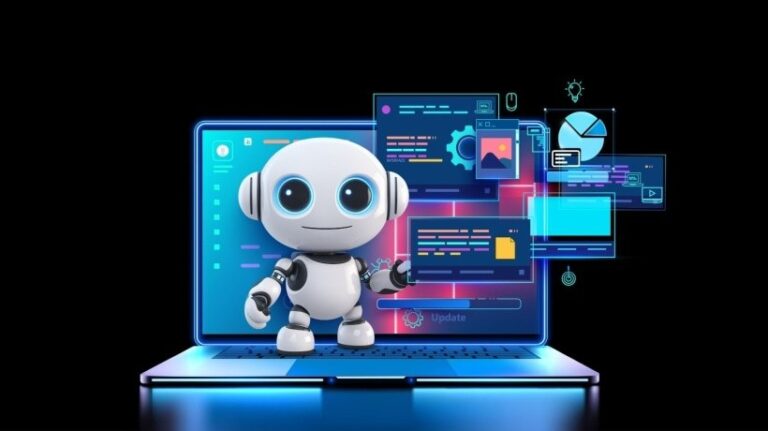
L&D AI: Shaping the Future of Workforce Training
With a significant amount of modernization in the workplace, businesses are struggling to keep up, relying on increasing their workforce and pondering to stay competitive. According to a 2024 survey conducted by Statista among US employees, 71% of respondents reported being satisfied or extremely satisfied with the company’s reskills and skills training. In this context, the use of AI in workforce training by learning and development (L&D) has undergone a rapid shift from being a complementary tool to strategic priorities. Apart from the revival of corporate training programs, artificial intelligence is driving learning experiences in new directions by providing personalized, data-driven, intelligent solutions in the field of workforce development. [1].
Large personalization
Popular-based training proves to be quite attractive in many cases. To provide a more customized solution that suits your personality, artificial intelligence takes into account individual learning practices, attitudes and gaps. Based on real-time performance, the system may, for example, suggest the learner’s next course, adjust the difficulty level, or provide a microlearning module. The job of AI is to ensure that learners are not bored or stressed.
AI-driven adaptive learning systems can update learning paths in real time, provide the fastest advancements to users who are working very well, and provide additional support to those who are not making progress [2]. This methodological change will allow learners to remain involved and allow learning organizations to observe faster and more meaningful skills improvements.
Intelligent Automation for Efficiency
AI performs many administrative and iterative tasks. Therefore, this process does not require human intervention. This allows L&D professionals to spend time on other important chores. AI solutions help you label content, create quizzes, analyze learners, and collect feedback, which at the same time increase accuracy and speed.
Training and HR data teams can analyze information generated through AI-driven platforms to understand the characteristics of high-performance employees, training program completion rates, and progress across learning trips. Using data patterns provides a more effective approach to calculating ROI. Most importantly, businesses can use accurate data to enhance their ongoing training programs.
Continuous learning and skill alignment
In a rapidly evolving world of technology, the duration of skills still being effective in performing tasks is very short. Artificial intelligence helps to adopt a policy of continuous learning by reminding employees of their future roles and business needs that will help them improve their new materials, learning pathways, and capabilities and skills. Using predictive analytics, AI can analyze future skill deficiencies and actively recommend relevant training, thereby continuing to prepare the workforce to meet evolving demand.
Furthermore, AI is a link that connects learning and performance. By integrating competence and job roles with training outcomes, it is possible to link learning to organizational goals, thereby ensuring that learning remains aligned with strategic goals.
Enhance engagement with conversational AI
Artificial intelligence is transforming the way learners access courseware. Conversational AI and chatbots simulate real-world experiences, provide real-time coaching support, and answer learner questions when needed. In this way, the digital assistant enables instant support, runs the learning process interactively and is accessible in remote and hybrid environments.
Furthermore, simulations equipped with a gaming learning environment and AI can replicate complex, high-risk situations, allowing learners to practice and improve their skills in a safe, low-risk environment.
Shaping the future of workforce training
According to the 2025 Workplace Learning Report from LinkedIn, 91% of L&D professionals agree that continuous learning is more important than ever for career success [3]. The future of workforce training involves integrating AI into the entire learning process, from early stages to results. The more advanced AI tools, the easier it is to realize a true self-configured learning system that can create, deliver and optimize training with minimal human intervention. Such a shift requires L&D experts to adapt their roles accordingly.
In addition to content generation, skilled experts in the field of learning and development perform functions such as experience design, data analysis, and partnerships to create learning that aligns with the company’s transformative goals and goals. Organizations that can adapt to changing times are better positioned to maintain both intensive and agile learning models.
Conclusion
Learning and Development AI is not just a temporary stage. It is the very foundation of modern generation workforce training. Effective use of artificial intelligence will enable businesses to move away from traditional training methods and create an effective, adaptive, human-like learning ecosystem. Furthermore, a journey to future workforce training will make AI more efficient as a key agent unlocking the potential of large-scale human beings.
References:
[1] Top 10 corporate training courses and programs to empower employees
[2] The role of adaptive learning strategies in driving human capital transformation
[3] Workplace Learning Report 2025: The Rise of Career Champions
Originally published at www.infoprolearning.com
Source link


